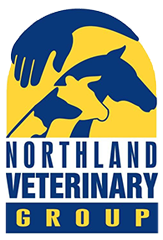Colostrum is rich in the antibodies that protect the calf from diseases in early life, and is also important as the first source of nutrients after birth. True colostrum is the first milk produced in the udder. The 2nd – 8th milking’s should be termed transition milk.
The active feeding of good quality colostrum as soon as possible after birth will reduce the risk of failure of passive transfer of maternal antibodies (FPT).
Around 50% of New Zealand calves have FPT. It is currently being shown that calves receiving adequate colostrum produce more milk in first and second lactations and have lower animal health costs.
Heifers treated for scours in the first 3 months of life are 3 times more likely to calve after 30 months of age
Reasons for Failure of passive transfer – the 3 Q’s
Quality
Colostrum quality is affected by many factors; breed, age, dry period length, volume of colostrum produced, and time until first milking.
Colostrum quality in the udder rapidly declines at the point of calving (Morin 2010), thus if cows are only collected once daily from the calving area, collection of the best possible colostrum has not been achieved.
The most economic and practical way to measure colostrum quality is by use of a Brix refractometer. This device is robust, easy to use, and provides a quick practical way to ensure quality colostrum gets to the calves. We now have Brix refractometers in stock.
Quantity
To avoid FPT, a calf’s first feed needs to be at least 2L of colostrum if bottle fed or 2.5L-3L if tube fed.
Larger volumes need to be given if tube feed to allow a milk clot in the abomasum to form to allow efficient antibody uptake.
Quickly
Speed is the single most important factor. Absorption of antibodies in the calf’s gut declines very quickly from birth.
Ideally two feeds should be given in the first 12 hours. For a 40kg calf:
– 2x2L feeds in 12 hours of good quality colostrum
– 2x3L feeds in 12 hours of poorer quality colostrum
Colostrum management is a small but important part of the calf rearing puzzle, and, along with nutrition, and the calf environment, interact with each other to affect the overall outcome.
Suggested Calf Performance targets are
Failure of passive transfer : <20% of calves in the group.
Pre-weaning morbidity rate: Less than 10% of calves should be treated with antimicrobials and/or electrolytes.
Pre-weaning morbidity rate: Less than 3% of calves should die for any reason during this period, regardless of cause of death.

